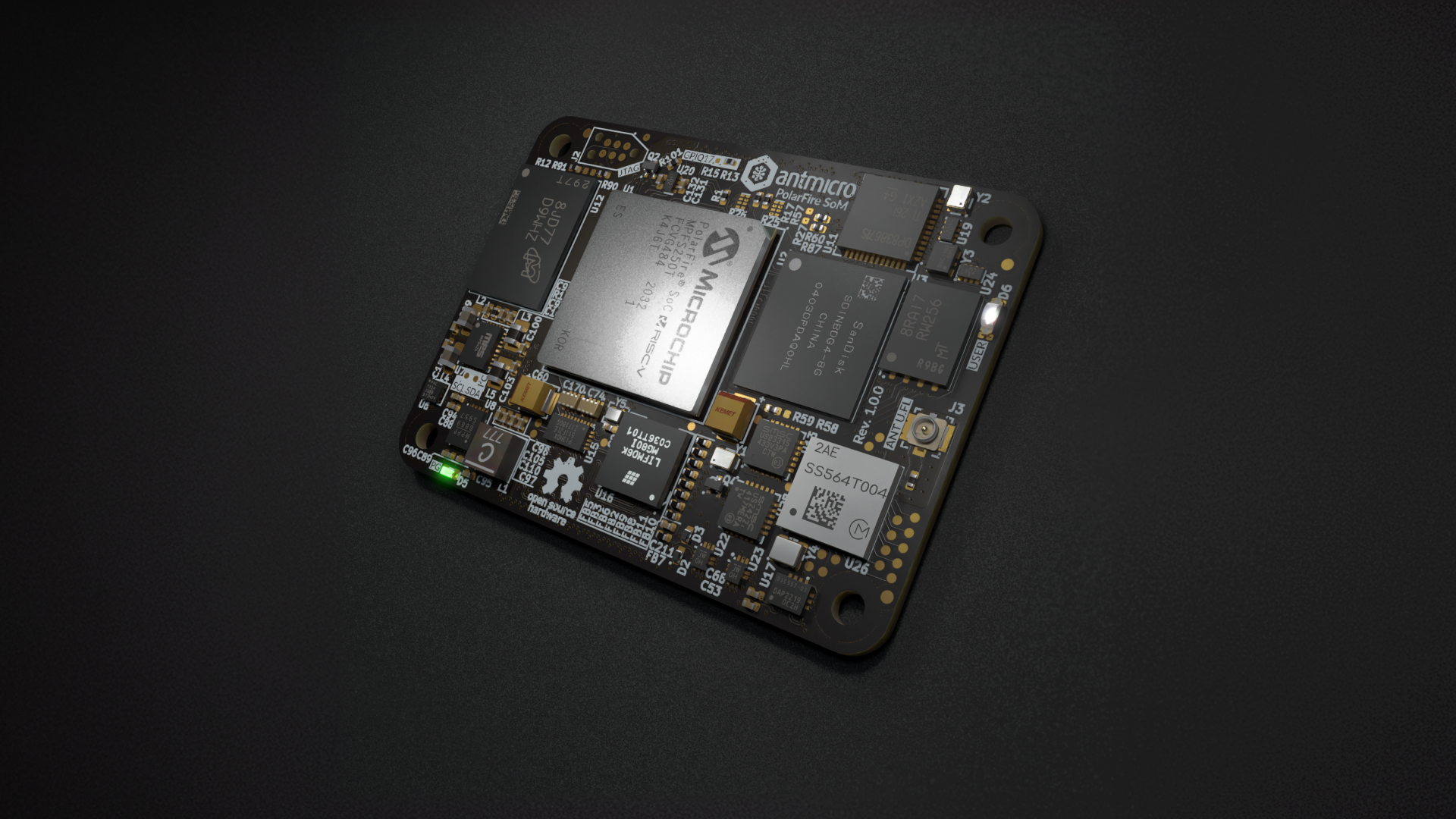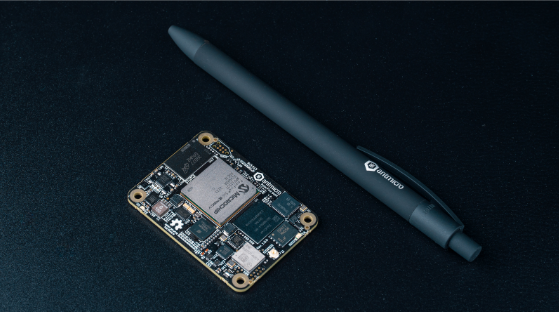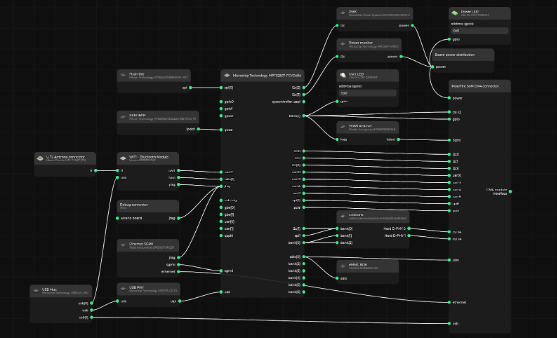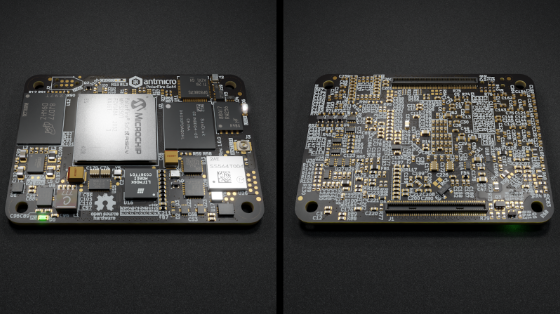
The PolarFire SoC was the world’s first Linux-enabled mass market multi-core RISC-V SoC, originally made available pre-silicon by Microchip through Antmicro’s Renode simulation framework. Thanks to the ongoing collaboration between the companies, Renode has been the default virtual development option in Microchip’s SoftConsole IDE for this product family, with co-simulation of the on-board FPGA fabric possible thanks to Renode’s DPI support and integration with Verilator. Work is under way to enable the upcoming follow-up product, the PFSoC 2, as well.
Besides simulation tools, Antmicro provides software frameworks and custom engineering services for the development of physical products which you can explore in the software and hardware sections of Antmicro’s new interactive offer website based on a portfolio of open source boards. To connect the PFSoC platform even stronger to the open source ecosystem, Antmicro has introduced the open source PolarFire System on Module, which can be easily adapted by Antmicro to meet customer needs. The SoM simplifies the hardware integration process, covering the most demanding parts of the design: DDR and MMC memory integration, FPGA fanout, power management, as well as communication interfaces including Ethernet, WiFi, PCIe and video I/O, all in a Raspberry Pi Compute Module 4 form factor. It can also be integrated with Antmicro’s Remote Device Fleet Manager, unlocking the possibility of secure Over-The-Air updates for devices requiring remote management, such as drones, UAVs, interactive kiosks or smart cameras.

The PolarFire SoM
A look into the RISC-V-based PolarFire SoM
The Antmicro Open Source PolarFire SoM is a Raspberry Pi CM4 pinout compatible System On Module, built around the Microchip MPFS250T SoC with 2 gigabytes of LPDDR4 memory. An external companion chip provides a physical layer MIPI D-PHY exposing 4-lane CSI and DSI for high-performance video applications.
The SoM’s onboard features include:
* 2 GB LPDDR4 (expandable to 4 GB)
* 8 GB eMMC storage (expandable to 64 GB)
* 128 MB SPI flash
* Murata LBEE5PK2AE dual-band 2.4 GHz and 5 GHz Wi-Fi 5 (802.11ac) and Bluetooth 5.4 module
* Power Management unit with single 5V supply input.
Interfaces exposed on the CM4 connectors include:
* 4-lane MIPI CSI-2 + 4-lane MIPI DSI D-PHY exposed via the external companion chip
* 2-lane MIPI CSI-2 D-PHY connected directly to PolarFire FPGA `BANK1`
* PCIe x4 (expanding CM4’s PCIe x1 to four lanes
* Gigabit Ethernet compatible with Raspberry Pi CM4 pinout
* HDMI output interface
* USB 2.0 OTG
* SD Card interface
* 26 GPIOs exposed from the programmable logic and CPU
* I2C bus for accessing peripheral sensors.
The diagram below shows the structure of the PolarFire SoM.

PolarFire SoM System Diagram
The diagram and the board itself are now part of the recently launched System Designer with a dedicated page for the SoM – letting you embed it in a larger system design, a capability which Antmicro presented at the Space Computing Conference in Mountain View, CA on July 15-19 2024, with a dedicated talk entitled “Rapid development and automated testing of dependable heterogeneous multi-node space systems with open source tools”. Also on System Designer, you can find the components’ datasheets, details and links to the components on Renodepedia.
You can find out even more about the module on Antmicro’s Open Hardware Portal, including a detailed component list, overview of the 14 layer stackup, schematics and interactive 3D renders.
Open hardware PolarFire SoM for size-constrained devices
The SoM, designed in the open source KiCad suite, has been released as permissively licensed open hardware, which follows Antmicro’s philosophy of documenting the world’s hardware and software landscape and building out a portfolio of open hardware reference designs to facilitate fast-paced, ambitious product development projects. Antmicro keeps their modules not only transparent, but easily configurable and compatible with each other so that in the end the growing collection of hardware designs remains complementary and thus allows for setting up early Proof-of-Concepts much faster.
The choice of the popular Raspberry Pi CM pinout and form factor let Antmicro combine the SoM with existing boards such as the Antmicro Open Source Scalenode CM4 Baseboard, where the PolarFire SoM can be used as a drop-in replacement for the Raspberry Pi CM4, unlocking an easy way to add native RISC-V compute and FPGA processing into Antmicro’s compute cluster infrastructure.
To expose all the capabilities of the SoM, Antmicro also developed a new open hardware CM4-standard baseboard https://github.com/antmicro/cm4-baseboard, to be described in a separate article.

Render of the PolarFire SoM
Antmicro commercial services: develop your next RISC-V and FPGA-based product the smart way
Antmicro’s open source tools and CI-driven workflows, including the Visual System Designer, the KiCad-Blender 3D rendering flow and the Open Hardware Portal, provides Antmicro’s customers with a unique advantage of being able to virtually see the device, its components and structure from early on in the prototyping phase throughout the entire development lifecycle, to support informed decisions, faster development and even sales and marketing purposes.
The PolarFire SoC itself is also supported in Renode, Antmicro’s flagship open source simulation framework. This allows you to not only run the target software as-is in simulation, but also introduce adaptations and tweaks in parallel to the hardware design and integration stage of your product development. In addition, Antmicro are actively looking towards the release of the announced PolarFire 2 which is expected to provide even more power and compute capabilities.
If you’re interested in integrating the PolarFire SoM in your project or building your next RISC-V device for industrial, space, automotive or any other challenging application with Antmicro, don’t hesitate to contact them at contact@antmicro.com.



